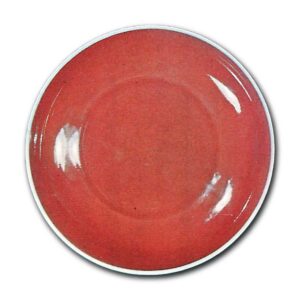
This is the copper-red glaze of Chinese porcelain. It was first invented in the Xuande period of the Ming dynasty (1426-35). The name “saikohong” comes from the fact that it was used as a ritual utensil on a suburban altar, where heavenly deities held ceremonies in the four directions of heaven and earth. Its color is like the color of a clear morning mist.
Hence, it is also called “ceremonial red. It also has other names, such as “jikibeni,” “drunkenbeni,” and “jikibeni,” but these are actually just different names given by local people because of their similarity in sound. There are also two types of “Festival Red. One type is called gembong or daibong. The other is called “Sengbeni. The other type is called “Senbeni. The other type is called “Sembong,” as described in Huang Zijing’s “Illustrated History of Famous Porcelains of All Generations. One school of “large red” spread and became “match red,” “tangerine red,” “boar liver and liver,” “eggplant skin,” and “cloud peas. The “fresh red” group spread to the “fatty water beauty festival,” “pea red peach blossom piece,” “eyelid,” and “Yang Hui color. All of them are named according to the depth and shallowness of their colors. All of them are nothing but the result of reduction firing of copper glaze. These days, it is more commonly referred to as “underglaze red,” and its origins date back to the Yuan dynasty.



